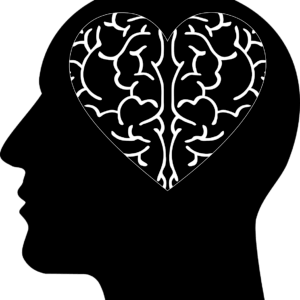 7
7




 7
7

 2
2

 21. 04. 2024
21. 04. 2024

 20. 04. 2024
20. 04. 2024
 4
4

 19. 04. 2024
19. 04. 2024
 20. 12. 2019
20. 12. 2019

We often hear "this is a machr," or we say about someone "but he is a clever man, it goes well ..." and we wave our hand because we cannot do it or invent it. How come they have existed, and hopefully they still exist, the geniuses who have moved and moved our civilization forward. Because they meant it, it burned them, in short, their heads were open. And why can't we? Are we so stupid? After all, every generation of children must be smarter than their parents, otherwise we would eventually go back to the trees and cut our heads for some food.
But the hand can't be smarter than the brain. If your hand can make something handy, then your brain has done it before. So if we want to achieve certain skills and knowledge in any field, our brain must know everything in the first place.
Let's try to think about how to learn to think. We need to do a little review of how our brains work. The brain has two hemispheres, right and left. The right hemisphere generally focuses on mental activities and in its function the main role is played by auditory perceptions, music, colors, dimensions, imagination, daydreaming. The left hemisphere focuses on writing, languages, logic, numbers, and notorious reactions. In his research into brain function, American neurophysiologist Roger Wollcot Sperry found that when the left hemisphere is working, the right hemisphere of the brain is in some relaxed, semi-meditative state associated with alpha waves. And if the opposite situation occurs, the left hemisphere is in a similar state. Among other things, RW Sperry received the Nobel Prize for research into the work of both hemispheres of the brain. So his brain was working at about full speed of both hemispheres.
So what can be said about our brain is that it always works in certain states at certain wave frequencies. Basically, we can divide the states of brain frequencies into five categories, into five levels.
Gamma level - state of excitement
We are stressed into this state, so we could actually say that this state of mind induces stress. It occurs during stage fright, during fear of anything, during high physical activity. The brain automatically starts to work faster, and the faster it works, the more the normal thinking is suppressed in us. Often, during high mental stress, we do something that we regret later. Certainly each of us knows this state. The brain moves at frequencies “33 - 20 Hz”. (1 Hz = 1 cycle per second.)
Betta level - normal state
It is a condition in which we find ourselves in a substantial part of the day when we perform routine activities, simply everything that is associated with our normal life. At this level, our brain is found, even when we eat, when we talk to someone, when we walk, watch TV, etc. Our brain works at the frequencies “20-14 Hz”. It is simply normal physical activity.
Alfa level - release status
The brain gets into this state when relaxing, reading, watching TV, or doing nothing. Or a conscious relaxation, a light sleep. The brain operates at a frequency of "7-14Hz".
Theta level - sleep and meditation
We sleep in this state. Alternatively, we are in a state of meditation and the brain is operating at a very low frequency of "4-7Hz".

Delta level - a state of deep sleep or unconsciousness
The brain operates at a frequency of "0.5-4 Hz". It is a very deep sleep, when nothing really wakes us up. The brain works with this frequency in a state of anesthesia or in artificial sleep.
But let's go back to the normal workings of our brain. For most people, only the left hemisphere works at 90 percent. And the right hemisphere somehow travels to only a tenth of the gas, in motoring terminology. By involving both hemispheres, ie thinking with the whole brain, it is typical for very creative people. How to achieve?
Experiments in this area have shown that virtually many individuals have a full range of mental abilities. Unfortunately, due to poor education and incorrect information, most of us tend to think that he has innate talents only for some of the areas of human activity. While we have no talent for other activities. So we are clear that successes in some areas are forbidden to us once and for all. But our self-assessment should be correct: so far I have managed to develop skills in only one area, while leaving the others idle for various reasons.
Thanks to R, W. Sperry's research, a group of people began to develop and practice those mental abilities she had long considered very weak. Under the guidance of teachers and trainers, your weak skills can develop regardless of age and new skills also develop your original skills. If you have never drawn well, enroll in a painting class. If you speak very poorly one foreign language, start to learn languages intensively. You can also choose languages very exotic for us.
Learn to enjoy both halves of your body. Begin juggling, learn to type on your computer keyboard with both hands, and ideally "all ten." You can do the same in many other common activities such as telephoning, combing, and brushing your teeth. Try writing with the other hand you never use. Did you know that Jiří Trnka, an outstanding artist, wrote with his right hand and painted with his left hand?
However, what is as important as the work of both cerebral hemispheres is to teach the brain to rest. And it's not just classic sleep, which is of course primarily important. Thinking "whole brain" leading to full creativity requires regular breaks. If you don't do it consciously, your brain will do it for you. Many work hard but not cleverly, which gradually leads to an increase in the load on one hemisphere and thus over time lose the ability to concentrate and cooperate with both halves of the brain. Surely you have solved many tricky problems in the past. So try to think about how and when you solved it. When did you feel a sudden inspiration on how to crack it. Wasn't it a coincidence in a completely different normal activity? It was confirmed to a large group of people that they solved a complex problem while walking or when they went swimming. Our brain urgently needs this kind of activity. It needs thoughtless and relaxed activities such as walking, cycling when we are alone and relaxing the body and spirit.

The ancient Romans had their specific expression "solvity per ambulum“. Loosely translated, solve it with a walk. The Romans had no idea of the activity of the two hemispheres of the brain, but they knew that a regular rhythm of walking, a calm rhythm of heart and breath, oxygenation of the brain, and a walk in nature led to the release of thoughts. They have long known that people need positive perceptions such as the smell of flowers, the color of trees and the singing of birds - pleasant acoustic and visual perceptions that help to relax, think creatively and solve problems. So if you're solving a problem, believe in a thousand-year-old experience and get it started.
Such a balance between the left and right sides of the brain needs to be achieved by each of us. When we fail, we become relatively inefficient. In other words, whether we develop ourselves or use any system of development of our intelligences, we must ensure that both sides of the brain are actively balanced.
An integral part of the good functioning of the brain is also its proper nutrition. The quality and quantity of food is important for maintaining brain performance, memory and concentration. Specific for the brain is that it needs a constant supply of energy in the form of glucose for its activity. It consumes about 120 g per day, which is 60% of the whole body's consumption. Fluctuations in glucose levels mean fluctuations in brain activity. Therefore, it is advisable to consume foods - complex carbohydrates that increase glucose levels gradually. These are whole grain foods, unsweetened minds, natural rice, fruits, vegetables. Although simple sugars quickly supply the body with energy, they immediately lead to fatigue of the body.

Proteins are then a source of amino acids, from which important regulators and neurotransmitters are formed. Selenoproteins, which are found in fish, eggs, non-fat dairy products, soy, legumes and nuts, are important for optimal maintenance of brain functions. Minerals such as iron, iodine, calcium, selenium, zinc and magnesium are also necessary. Their source is the already mentioned foods.
How to maintain brain freshness throughout the day? The English saying "have breakfast alone, have lunch with a friend and give dinner to the enemy" still applies. In other words, eat breakfast well - oatmeal, mind, wholemeal bread and a cup of coffee are appropriate. Caffeine really helps in better blood flow to the brain. Honey is also an excellent support component of our diet. A Chinese proverb says, "Honey cures a hundred diseases and prevents a thousand." Let's not forget him.
Have a varied, light meat with a vegetable side dish, prefer rice. Some nutritionists recommend consuming meat (even red), but only with a vegetable side dish. And dinner should be light - fish, cheese, wholemeal bread, tea and as a dessert walnuts or food supplements such as goji, or Chinese gooseberry, hemp or pumpkin seeds and apples. A very high quality fruit food is a banana, which is also recommended for sleep disorders. After all, there is a good glass of wine for the night. If we do not consume alcohol in uncontrolled amounts, it can also be recommended as a means of improving the memory of the older generation.